| Back to Back Issues Page |
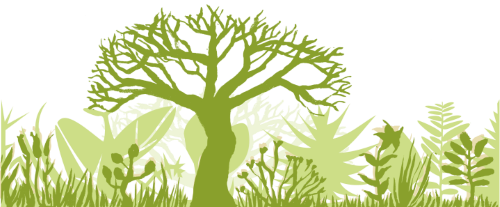 |
|
Restore Nature, Issue #010 March 14, 2024 |
HelloRESTORE NATURENewsletter 10March 2024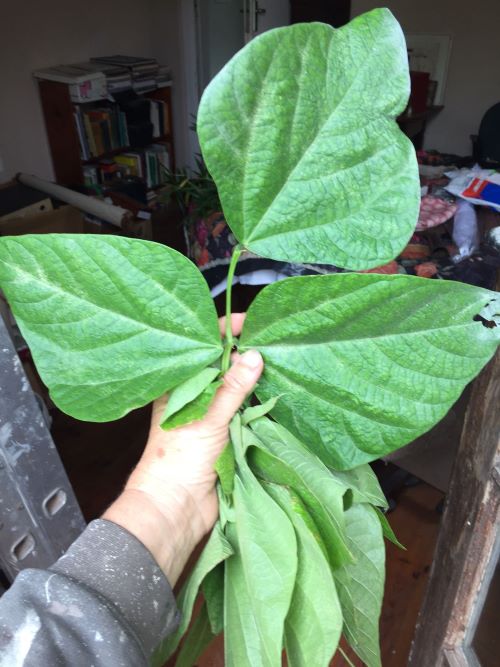
Microbial magic in plantsDear subscriber I'm delighted to bring you this issue of the Restore Nature Newsletter with a MOST relevant topic for those who grow organic vegetables, love biodiversity or are wanting to plant a food jungle which has great yields. As often happens, I had a podcast playing in the background while doing manual work (sewing curtains). I usually listen with half an ear and take in the information in a partial fashion while I'm working but hearing snippets tells me if I will find what the speaker says interesting and for this podcast I was that intrigued I went back and relistened several times.
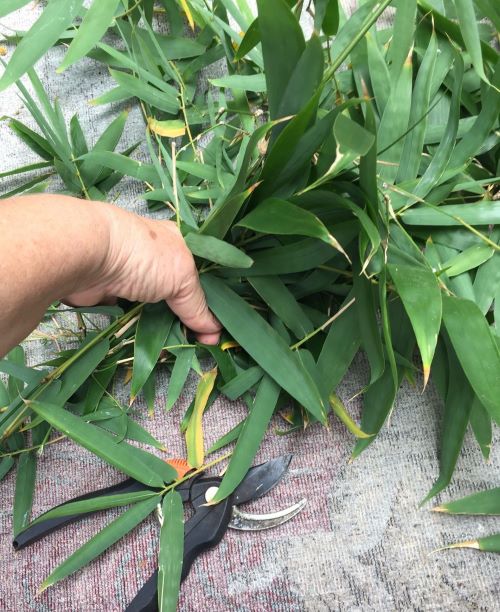
It was a revelation to me, although the information has been public for at least six years. I've known about microbiomes for a few years, without knowing enough. I knew that leaf surfaces, soil and roots, skin, the interior of body organs and the human gut all have microbiomes. I was not surprised to hear that there were plant cell internal microbes called endophytes. Therefore I was semi concentrating while listening to John Kemp of the Regenerative Podcast interviewing Dr James White on microbes that are taken up by plants. This is the James White interview I was listening to: https://www.youtube.com/watch?v=XAF4dA_NU2w. Then my ears pricked up as I heard of more and more wonders relating to these endophytes. All plants have endophytes or internal beneficial micro organisms. Dr James White has studied them for more than 40 years and has a lot of interesting things to say. What blew me away was his claim that endophytes are so important for plant growth that plants cannot survive without them. James White explains that seeds are the major vectors that introduce beneficial endophytes to plants. Attracting them from the soil is also important. They will multiply and inhabit all the plant's tissues, including the shoots, and are found as spores in the leaves. Native American farmers harvested fresh leaves from wild grasses and used them to inoculate maize seed. It is wise to do this, as much of the seed microbiome dies when saved seed becomes dry, but drying is necessary for preservation. Plants grow vigorously with the right seed and soil microbiome inoculation. There are many reasons for this. Read about the Rhizophagy Cycle below and consider the implications, they are momentous in many ways. 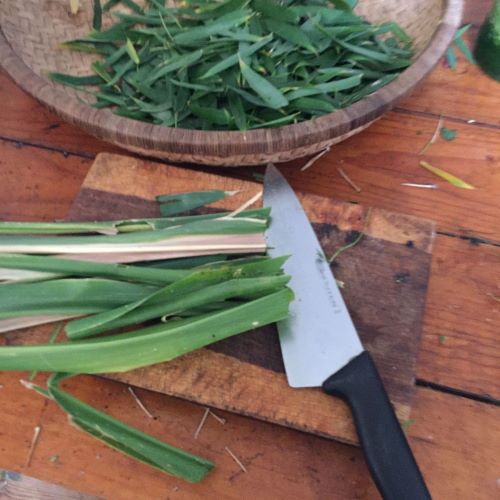
The Rhizophagy CycleAt the root tip the plant exudes a cocktail that attracts and multiplies specific micro organisms in the soil. The root tip then absorbs them into the plant tissues. Once internalized, the plants synthesizes super oxidates and bathes the microbes (usually bacteria or fungi) with these active oxygen species, and they lose their cell walls and are left with only the cell membrane. This makes the microbe cell more permeable. They lie inside the hard plant cell wall, skin to skin with the permeable plant cell membrane. In this space flowing juices move them around. As they slide along the outside of the plant membrane they give up most of the nutrients they have absorbed in the soil to the plant cell within. Now our pradigms must shift ! We've all heard that root hairs are for absorbing nutrients. But as we've seen the root tip is active in nutrient absorption. Also the job of root hairs is to inject the nutrient depleted microbes into the soil when the hairs elongate. They elongate more the more microbes they contain and need to expel. The root hairs then feed the free microbes with sugary exudates so that they can regrow their cell walls, live in the soil and absorb nutrients. But the microbes are very attracted to the exudates at the root tip tailor made for their delectation. The cycle is completed as the root tip engulfs the microbes it attracts, or as another theory goes, the plant induces the microbes to penetrate its cells. There the plant can once again control the microbes with active oxygen species and make them render their nutrients. 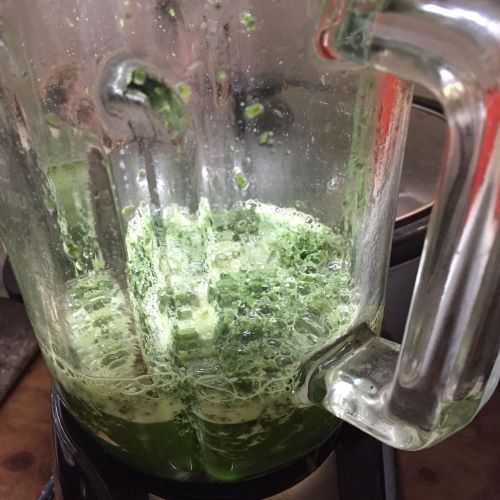
The cycle has many consequences, for example, that plants farm microbes because they are so vital for nutrient absorption, root hair growth (the roots will have no hairs at all without the microbes) and for inducing the production of anti oxidants in the plant as it must protect itself from its own active oxygen species created to dissolve the cell walls of the microbes. The removal of cell walls also helps the plant tame pathogens and turn them into beneficials ! Some plants can survive by absorbing the dissolved ions of artificial fertilizers directly but at a cost. The plant stops farming endophytes for nutrient supply. Its defences weaken and its nutritional worth is diminished. Plants need endophytes to be healthy and make us healthy. I mentioned that drying seed is one of the ways that the seed microbiome is lost. This means that in general bought-in seed will not have the same quantity of adaptive microbes. Hybrid seed that has been sterilized during production will have no endophytes, making the plant utterly dependent on chemical fertilizers. In contrast land races and self seeded plants have high levels of supportive microbes. With this new information I could suddenly explain two mysteries which puzzled me.
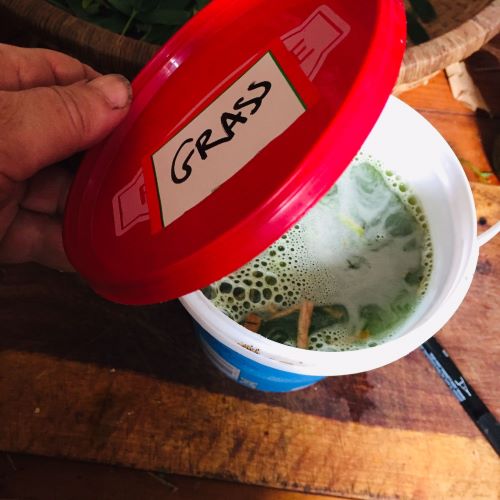
This year, a forgotten corn cob in a raised bed germinated as a great bunch of corn stalks coming from one point. I pruned out the periphery and left the strongest stalk and it was a monster which birthed two beautiful perfect red glass maize cobs. The rest of the corn in my garden, also from saved seed is months behind. The plants are half the size, with cobs like little cigarillos. Not being dried out completely must have helped the self seeded corn. Another strange experience this year occurred when I did not practice crop rotation in my grow bags. The planting went from runner beans, which were high yielding, to broad beans, and then this summer to monster runner bean vines from the saved seed. All in the same containers ! The beans must have been helped by the microbiome in the soil. The same saved seed in new beds produced puny plants by any standards, stunted, yellow and sickly. The phenomenal maize and bean growth was enhanced by two things: soil which contained the right bacteria due to NOT doing crop rotation for the maize or the beans, and saved seeds or seeds in the ground which clung to remnants of a microbiome adapted to my garden.
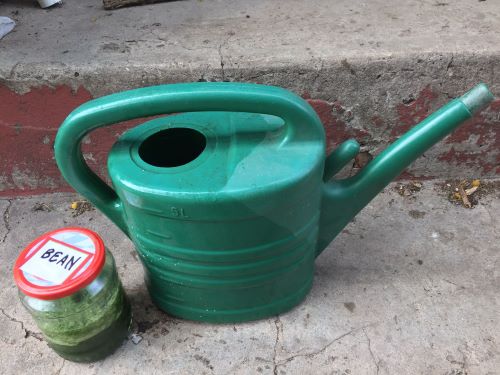
According to James White crops with the right microbiome can sometimes flourish without inputs like manure. Wild plants do this, but it still seems incredible. There is a lot to unpack in the interview. I decided to test some of what he was saying as I'm rather cynical. Nature talk and green promises have seduced me too often. I set out to find remedies for my sickly beans and puny maize cobs, though its too late as the best time for inoculation must be the seed stage. I harvested an armfull of stalks from my vigorous bamboo plant (also a grass), and what was left of the giant maize stalk's green leaves. I harvested the biggest leaves from my biggest bean vines. I separated leaves from stalks and chopped and then blended them with rain water. This green mush I added to watering cans of rain water and inoculated all my maize, my maize seedlings, my beans and bean seedlings, and the bags for beans I have not even planted yet. I realize I had not provided a medium for the spores in the leaves to proliferate. I'm assuming a mix of sugar and nutrients would help with that, and I just happened to have some brewing with an air bubbler so this was poured onto the soil on top of the fresh leaf juice. If its true that the right microbes will make plants so independent of inputs, I shan't be too surprised ! I have to admit I'm learning all the time as I create the Garden against Extinction course. The 'content' will always be budding and leafing out and I hope never become wooden. But enough corny puns. For me this new information needs time to percolate through my perception, and produce many more experiments. Happy gardening and happy play ! Caroline 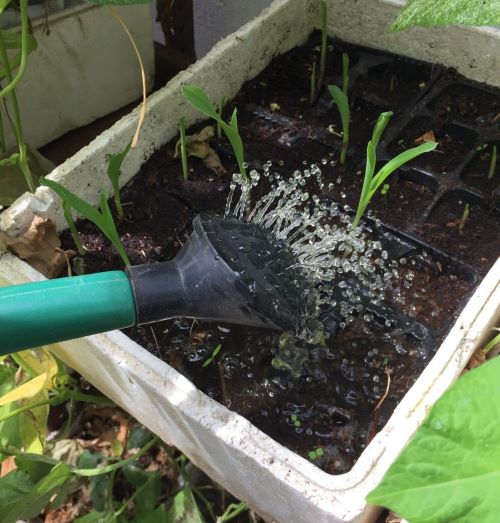
How the newsletter will work from now onI've decided to separate the newletter from the course, and so the newsletters on the topic thus far can be considered as a prelude to the course itself rather than part of it. There is a link in each Restore Nature Newsletter which gives you access to back issues if you missed any. The course material itself will from now on be embedded as hidden pages in the website to which subscribers have exclusive access and will no longer be delivered as newsletters. Topic suggestions welcomeYou may write to me anytime at the website greenidiom by filling out a comment. You can also use my webmail (website mail) address greenidi@greenidiom.com. 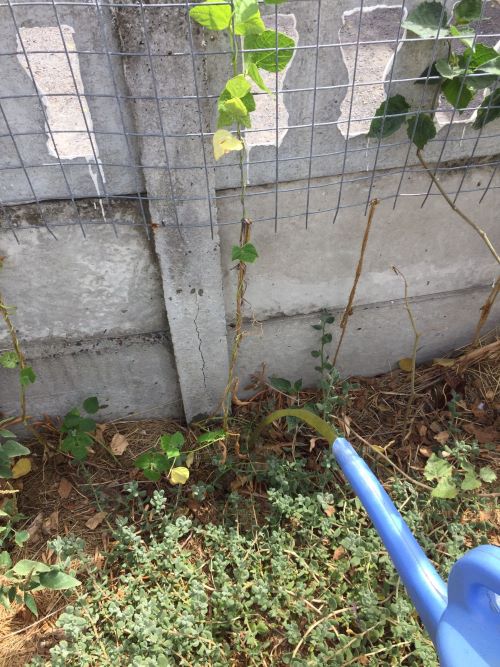
Part 2 of 'Gardening against Extinction'Part 2 of 'Gardening against Extinction' deals with the basics of designing a garden for maximum biodiversity. This section is not yet ready. The modules come if and when they're completed as I'm learning, researching and writing as we work through the course. I hope you enjoy the course !
Have you missed the introduction ?Please go to back issues right below if you want to catch up with what I've sent thus far as preamble for the course, as well as previous newsletters. |
| Back to Back Issues Page |